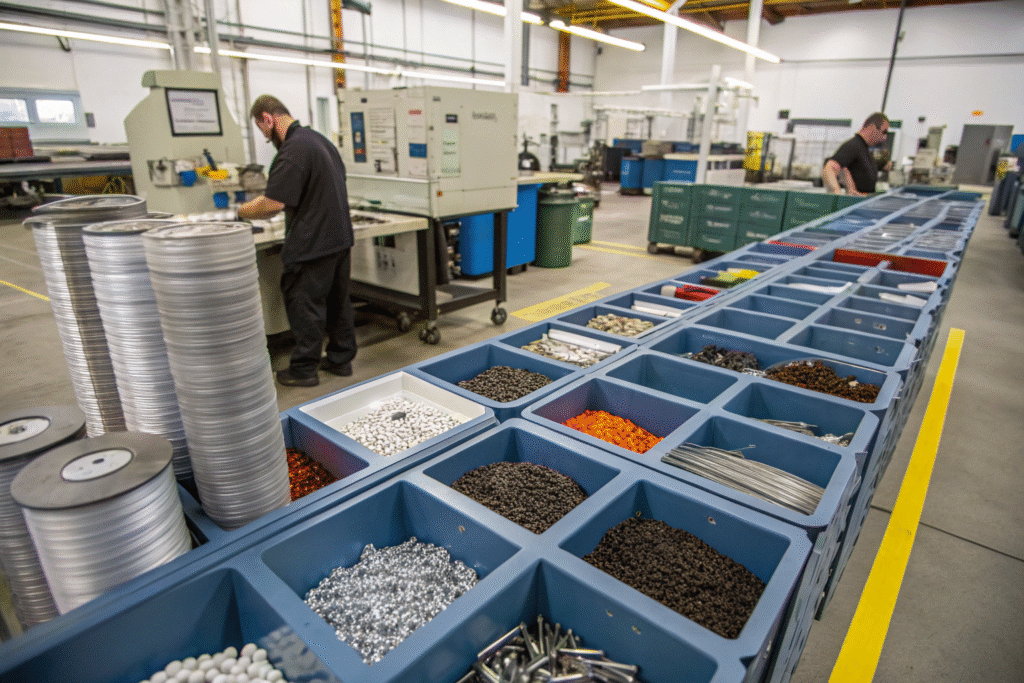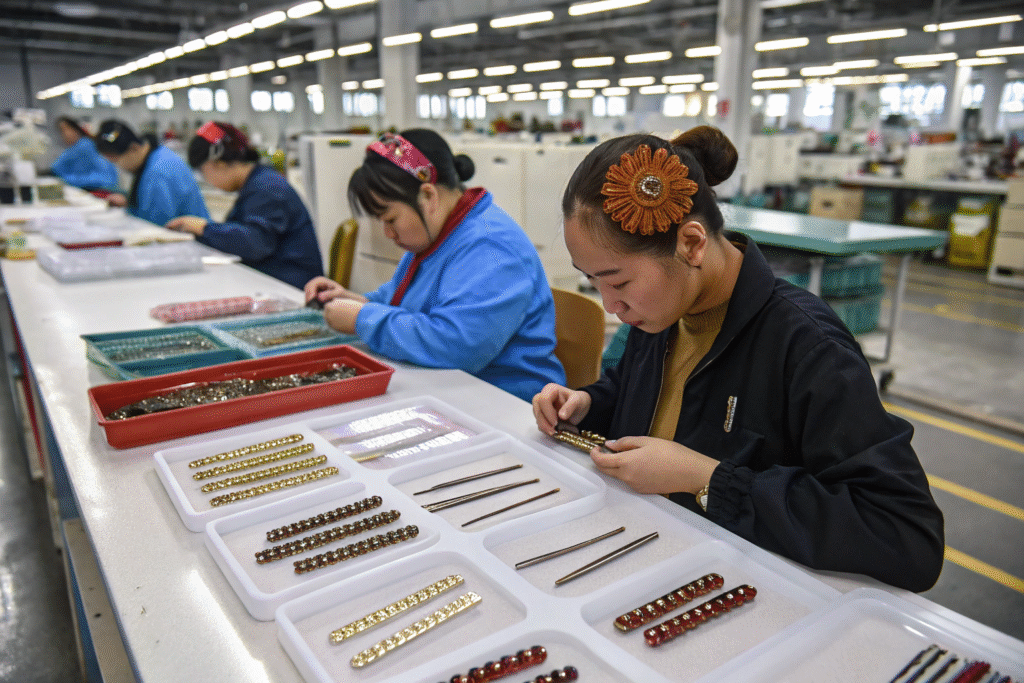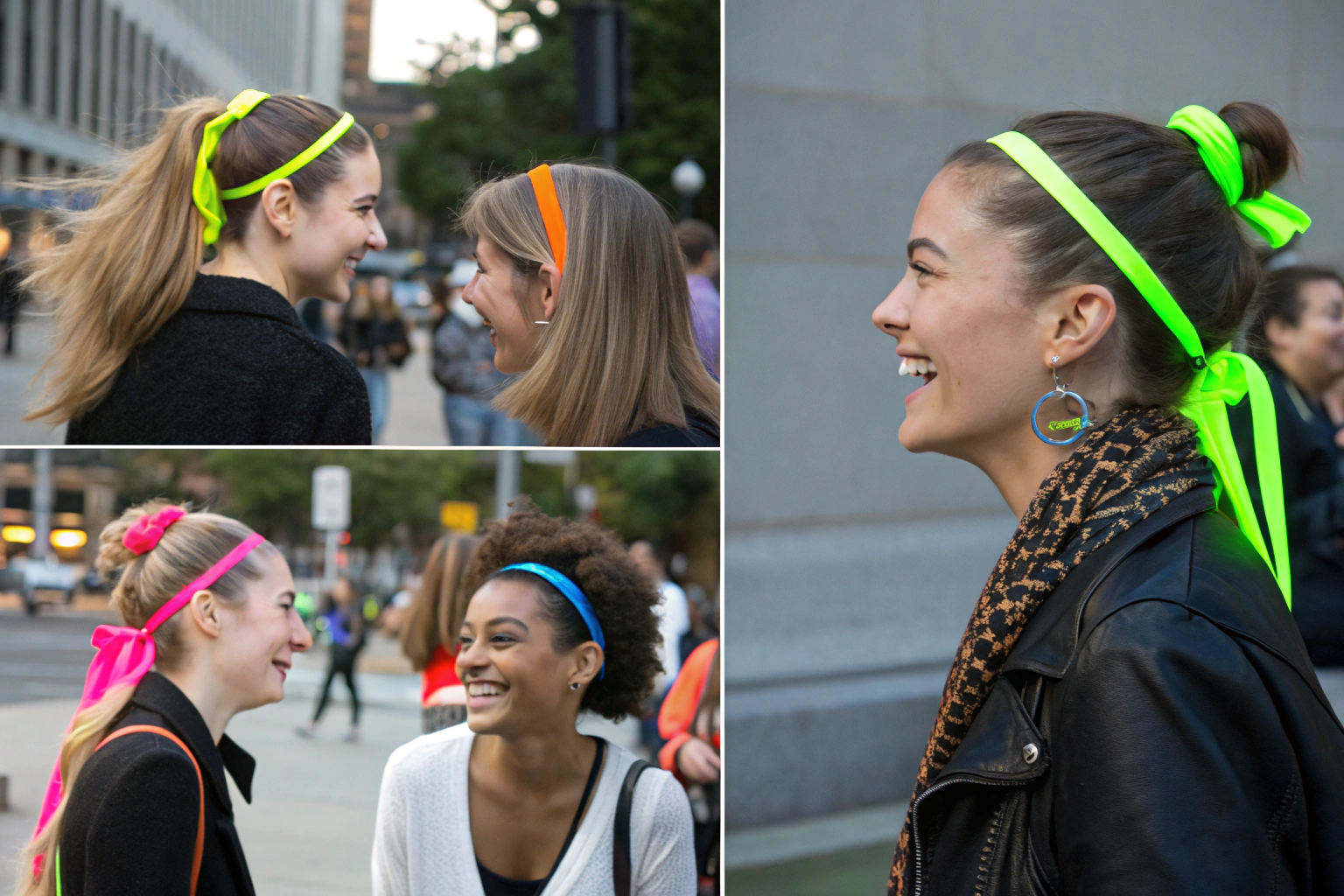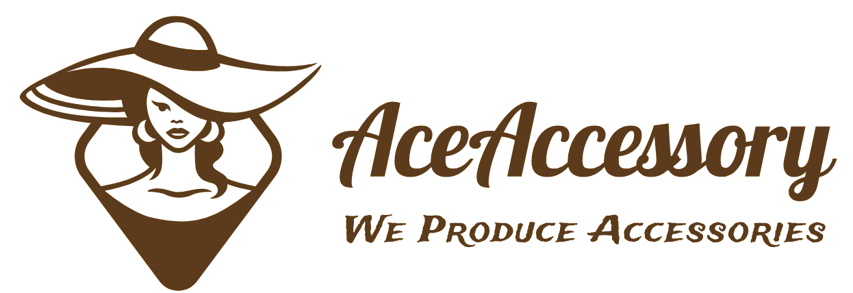Understanding minimum order quantities (MOQ) is crucial when sourcing hair pins from manufacturers. Many businesses, especially startups and small retailers, struggle with balancing inventory risk against per-unit pricing. The question of MOQ often determines whether a partnership is feasible, particularly for businesses testing new markets or product categories.
The minimum order quantity for hair pins typically ranges from 500 to 10,000 pieces per design, depending on material complexity, customization level, and manufacturer capabilities. However, several factors can significantly adjust these numbers, creating opportunities for businesses of all sizes to find suitable manufacturing partners.
At AceAccessory, we've helped countless businesses navigate MOQ discussions to find solutions that work for both manufacturer and buyer. Let's explore what truly determines MOQ and how you can find the right balance for your business needs.
What factors determine hair pin MOQs?
MOQs aren't arbitrary numbers—they're calculated based on specific production and business factors that affect manufacturer efficiency and profitability. Understanding these factors helps buyers negotiate better terms and make informed sourcing decisions.
Hair pin MOQs are primarily determined by material costs, production setup requirements, customization complexity, and manufacturer business models. Each element contributes to the minimum volume needed to make production economically viable.
How do materials affect minimum order quantities?
Material sourcing constraints significantly impact MOQ requirements. Specialty materials often come with their own minimum purchase requirements from suppliers, which manufacturers must pass along to customers. For example, precious metal plating or unusual plastic compositions may require larger minimum purchases than standard materials. At our facility, we maintain relationships with multiple material suppliers to offer different MOQ tiers—our standard hair pins using common materials start at 500 pieces, while designs requiring specialty metals or custom-mixed plastics might require 2,000-5,000 pieces minimum.
Why does production setup influence MOQ?
Manufacturing efficiency dictates much of the MOQ calculation. The setup time for machinery, creation of custom molds or tools, and production line calibration represent fixed costs that must be distributed across the order quantity. The table below illustrates how different production methods affect typical MOQs:
| Production Method | Setup Time | Typical MOQ | Best For |
|---|---|---|---|
| Standard Component Assembly | 1-2 hours | 500-1,000 pieces | Simple designs, quick turnaround |
| Custom Mold Creation | 2-4 weeks | 5,000-10,000+ pieces | Unique shapes, long-term production |
| Metal Stamping | 3-5 days | 2,000-5,000 pieces | Metal hair pins, consistent quality |
| Hand-Decorated Elements | Minimal setup | 300-500 pieces | Artistic details, small batches |
| Mixed Material Construction | 1-2 weeks | 1,000-3,000 pieces | Multi-component designs |
Our production planning team works to minimize these setup impacts through strategic scheduling and component standardization whenever possible.

How can businesses manage MOQ requirements?
Many businesses feel constrained by MOQ requirements, but several strategies can make minimums more manageable. Smart planning and negotiation can often bridge the gap between manufacturer needs and buyer capabilities.
Successful MOQ management involves strategic ordering, flexible specifications, and understanding the trade-offs between per-unit cost and inventory risk. These approaches help businesses optimize their ordering patterns for better cash flow and reduced risk.
What ordering strategies reduce MOQ pressure?
Assortment ordering allows businesses to meet overall quantity minimums while maintaining product variety. Instead of ordering 5,000 pieces of one hair pin design, a buyer might order 1,000 pieces each of five different designs that use similar materials and production processes. This approach satisfies the manufacturer's need for efficient production runs while giving retailers the variety they need to appeal to customers. We frequently work with clients on assortment plans that maximize their buying power while minimizing inventory concentration in any single product.
How does specification flexibility impact MOQ?
Design adaptation can significantly lower MOQ requirements. Small changes to materials, finishes, or design elements can sometimes reduce minimums by 30-50%. For example, using a standard metal finish instead of a custom color, or selecting from existing component options rather than creating fully custom pieces. Our design team often suggests minor modifications that maintain the aesthetic vision while making production more feasible at lower quantities. This collaborative approach has helped many startups and small businesses launch their hair accessory lines without overwhelming inventory commitments.

What MOQ options exist for different business types?
MOQ requirements should align with business size and stage. Manufacturers often tier their MOQ policies to accommodate different customer types, from startups to established retailers.
Business size, sales channels, and growth stage all influence which MOQ approach makes the most sense. Understanding these alignments helps businesses find manufacturers whose policies match their operational scale.
What MOQs work for startup businesses?
Starter programs specifically designed for new businesses typically offer lower MOQs in exchange for slightly higher per-unit costs. These programs acknowledge that startups need to test markets with smaller quantities before committing to larger production runs. Our startup program offers MOQs as low as 300 pieces for select standard designs, providing an accessible entry point for emerging brands. The slightly higher per-unit cost reflects the additional handling and setup required for smaller batches, but enables entrepreneurs to validate their products without excessive financial risk.
How do MOQs differ for established retailers?
Volume tier pricing rewards larger orders with better per-unit costs while maintaining manageable minimums across multiple products. Established retailers typically order larger quantities but spread across numerous SKUs. Our approach for these clients focuses on total order value rather than strict per-SKU minimums, providing flexibility while ensuring production efficiency. For example, a retailer might order 15 different hair pin styles at 800 pieces each rather than 5,000 pieces of one style, achieving the same total volume with much better market coverage.

How does customization affect hair pin MOQs?
Customization represents one of the most significant factors in MOQ calculations. The more unique and specialized a hair pin design, the higher the minimum quantity typically required to justify production setup and tooling costs.
Customization complexity, from simple logo additions to fully unique designs, directly impacts MOQ requirements. Understanding this relationship helps businesses make strategic decisions about where to invest in customization versus where to use standard options.
What customization levels have different MOQ impacts?
Customization tiers allow businesses to choose the right balance between uniqueness and quantity requirements. We typically categorize customization into three levels with corresponding MOQ implications:
- Level 1: Color/Style Variations - Selecting from existing designs with modified colors or finishes: MOQ 500-1,000 pieces
- Level 2: Modified Designs - Adapting standard designs with new elements or materials: MOQ 1,000-3,000 pieces
- Level 3: Fully Custom Creations - Completely original designs requiring new tooling: MOQ 3,000-10,000+ pieces
This tiered approach helps clients understand how their customization choices affect production minimums and make informed decisions about their product development strategy.
Why do tooling costs influence custom MOQs?
Amortization of development costs explains why fully custom designs require higher MOQs. Creating new molds, stamps, or specialized tooling represents significant upfront investment that must be spread across the production run. A custom metal stamp for unique hair pins might cost $2,000-$5,000—this cost becomes negligible when spread across 10,000 pieces but represents a significant per-unit cost at 500 pieces. Our transparent costing breaks down these tooling charges separately from per-unit pricing, allowing clients to understand exactly what they're paying for and make strategic decisions about custom tooling investments.

Conclusion
Minimum order quantities for hair pins represent a balancing act between manufacturer efficiency and buyer needs. While typical MOQs range from 500 to 10,000 pieces, numerous strategies exist to make production feasible for businesses of all sizes. The key is open communication with manufacturers about your constraints and goals, flexibility in design and ordering approaches, and understanding the cost drivers behind MOQ requirements.
If you're looking for a hair pin manufacturer that offers flexible MOQ options and collaborative problem-solving, we invite you to contact our Business Director, Elaine. She can discuss your specific needs and help find MOQ solutions that work for your business stage and goals. Reach her at: elaine@fumaoclothing.com.










